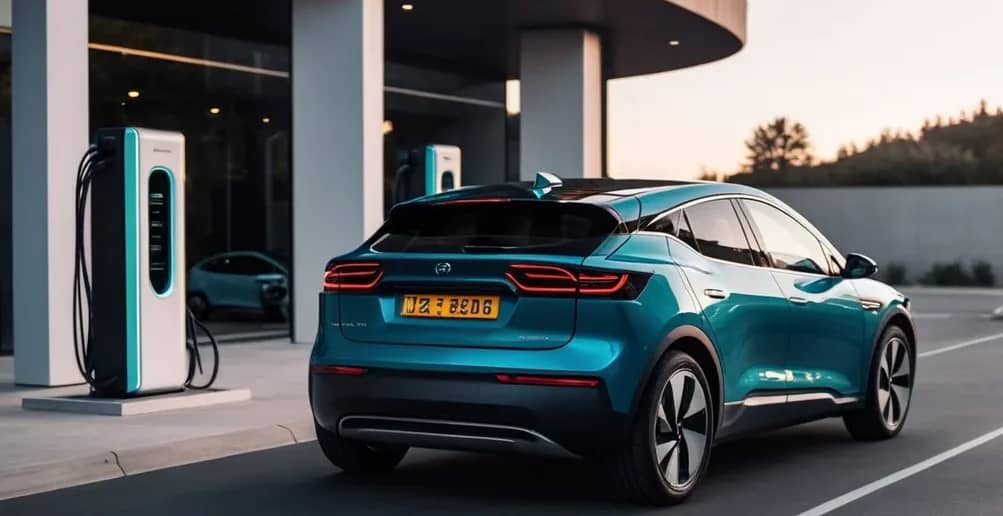Keeping Your Cool: How Electric Cars Deliver Efficient Climate Control
It’s 103°F outside and you’re sitting in traffic in your new electric car. As beads of sweat form on your forehead, you crank the AC dial to max. Cool air pours through the vents offering sweet relief. But in the back of your mind you worry: is all this air conditioning draining my battery?
This concern highlights one of the unique challenges faced by electric vehicles. With no hot engine to harness waste heat for warming the cabin in winter or powering a compressor to run the AC in summer, EVs have to get creative with their climate control systems. Automakers have devised some clever solutions to keep occupants comfortable in any season while minimizing the impact on driving range.
The basic air conditioning components in an electric vehicle are fundamentally similar to a conventional car. A chemical refrigerant goes through phases of compression, condensation, expansion and evaporation to absorb and discharge heat. But the key difference is how that refrigerant gets compressed in the first place.
With no engine to tap into, EVs have to power the AC compressor directly from the high voltage battery. This is accomplished by integrating a small dedicated electric motor to spin the compressor. Some systems operate the motor through an inverter that converts the DC current from the battery pack into AC to drive the motor.
While effective, running the AC compressor does drain the battery more rapidly. This makes efficient operation even more important in an electric car. Manufacturers take every measure possible to minimize the power demands of the AC system:
While you may have to sacrifice some all-out frigid AC blast time, these measures help provide efficient cooling without decimating your car’s range.

Keeping an electric car’s occupants warm in chilly weather presents its own unique obstacles. Conventional vehicles conveniently harness engine heat and waste energy from the tailpipe to warm the interior. Electric cars have to work a little harder to produce heat without an engine.
Early EVs relied on simple resistive heating elements that convert battery current directly into heat. Similar to a toaster, these heaters pass electricity through resistors to create thermal energy to warm blown air. However, this approach drains the battery rapidly, significantly reducing winter range.
More advanced electric cars now use heat pump systems. Similar to a refrigerator working in reverse, a heat pump moves thermal energy from a cooler outside source into the warmer cabin. This provides heating more efficiently than pure resistive elements.
Here is how it works:
Heat pumps are a game changer for EV winter range, providing heat up to 3 times more efficiently than resistive heating. However, once temperatures drop below freezing, their capacity starts to diminish. Supplemental resistive heating may be needed to maintain comfort in very cold climates.
Since the AC and heating systems draw directly from the battery pack, maintaining their efficient operation is critical. Here are some suggested maintenance items to keep your electric car’s HVAC running at peak performance:
Replace Cabin Air Filter – A clogged particle filter restricts airflow over the evaporator, reducing cooling capacity. Replace it annually or every 20,000 miles.
Recharge Refrigerant – Low refrigerant levels due to small leaks will hinder heat transfer and compressor function. Have a shop recharge the AC system as needed.
Verify Proper Belt Tension – Make sure the compressor belt isn’t loose or slipping, which could interrupt refrigerant flow.
Clean Condenser Fins – Buildup of debris or insects on the condenser fins reduces their ability to shed heat into the air.
Clean Evaporator Housing – Periodically sanitize evaporator housings to prevent mold and maintain air quality.
Confirm Control Function – Ensure automatic climate control sensors are operating to best regulate compressor usage.
You can also optimize HVAC efficiency through smart driving and operation habits:
With some periodic maintenance and conscientious operating practices, drivers can comfortably cool their electric vehicles without compromising driving range.
Automakers continue to refine electric car HVAC systems to enhance efficiency and comfort:
While handling cabin heating and cooling presents unique challenges in electric vehicles, ongoing innovation promises to provide the comfort drivers expect without sacrificing driving range or performance. Soon climate controlled seats, intelligent climate assistants, and other advances could make EV cabins the most comfortable place to travel. With the rapid pace of progress, the future looks cool for electric vehicle owners who want to stay comfortable while helping build a cleaner world.